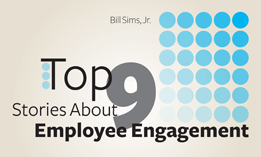When Behavior Based Safety Fails: Beef Stew and the Verbal Eraser
When I was in Saudi Arabia recently, I asked how many of the 400 managers I spoke with were using a behavioral process. Over 90% said that yes they were, in fact using one of the original systems developed by one of the largest safety consulting firms some 20+ years ago.
My next question: “Would you say that the feedback you give employees when you do observations is mostly POSITIVE or mostly NEGATIVE?”
1 hand went up saying that the feedback was mostly positive.
399 went up to say that they mostly gave negative feedback.
This was a startling discovery for me!
One of the safety managers at the conference told me more. “Bill, we get so tired of giving negative feedback to employees that we begin dreading doing observations. In fact, management has had to give us observation quotas to meet, and threaten us with discipline. But I still have the last laugh,” he said, “I just pencil whip the cards and fake the observations.”
I wondered how common this problem is. Observers who see little or no value in the observation process and who either fake the observations or don’t do them at all.
So I did some informal research, asking safety managers here in the USA if they were seeing negative reinforcement & pencil whipping in the world of safety observation. The sad answer was “yes.”
Why is this?
I believe it is because of a fatal flaw in the design of some of the behavioral processes most widely used today. Here is how they suggest we go about doing an observation…
First, you should approach the employee and deliver positive reinforcement (called R+ in the language of behaviorism) ,and positively reinforce their safe behavior. Then, we deliver negative reinforcement to point out the employee’s at risk behaviors.
Sounds good right?
And, properly delivered it is.
But all too often it doesn’t go down that way. The attempt to reinforce someone totally flops. Why?
I think the answer lies in Beef Stew.
You see, when I first got married to my dear wife from south Georgia I told her how much I loved Beef Stew. Mom’s beef stew was my special favorite.
And what did Margie do? She worked the whole day to surprise me with Beef Stew for dinner one evening. After the second helping I sat back, relaxed and said (in my infinite wisdom),
“Dear, that was delicious beef stew….”
(this would have been an ideal time to shut up, but oh no, not me…)
“and thanks for your hard work on it today”
“BUT, it would be better if you would use mom’s recipe.”
Ouch. Oops. Ouch again. (In classical conditioning terms, my comment paired my with negative feeling for my wife, so I became an aversive stimulus—which over time, if repeated would create avoidance behavior from my wife.)
To this day I am still amazed that I didn’t wind up wearing that Beef Stew on my new suit.
After some time Margie settled down enough for me to say how sorry I was and we patched it up.
That little lesson of 22 years ago has always stuck with me, and I think it helps us understand an important Achilles heel of a poorly delivered any observation process: The Verbal Eraser–”But”
As Aubrey Daniels puts it, in Bringing out the Best in People, when we use the word, “But” we erase anything we have said before it.
“You did a nice job on that report Sue, BUT, you should have tried harder.”
I came back from a recent speaking engagement where I scored 4.8 out of 5 (pretty good in most people’s book), but as I read through the speaker evaluations I felt myself feeling depressed and discouraged by the 3 negative comments and I totally ignored the 422 who ranked our session favorably.
I had to go read some of the positive ones to get centered again.
In the Beef Stew example, I thought I gave Margie R+ but guess again, all she heard was “mom’s beef stew is better”.
And in the case of poorly delivered BBS observation feedback all the employees take away is “what I did was wrong.”
But negative reinforcement isn’t as powerful long term as positive reinforcement. Telling me what I did right.
Our, ‘You Did It Right!’ card fixes this.
You can be sure that positive reinforcement happens and eliminate the pencil whipping.
This is precisely the idea behind our You Did It Right! Card. Observers now add a second step that of delivering positive reinforcement and feedback while we track and validate where it occurs and ensure there is no pencil whipping or favoritism.
Wish I’d have had a You Did It Right! card 22 years ago to give Margie.
I guess I better head to the jewelry store…
You can follow any responses to this entry through the RSS 2.0 feed. You can leave a response, or trackback from your own site.
